The difference between ceramic screws and other screws
As an indispensable fastener in industry and daily life, screws play a crucial role in connecting, fixing, and supporting. However, screws made of different materials have significant differences in performance, application scenarios, and the problems they solve.
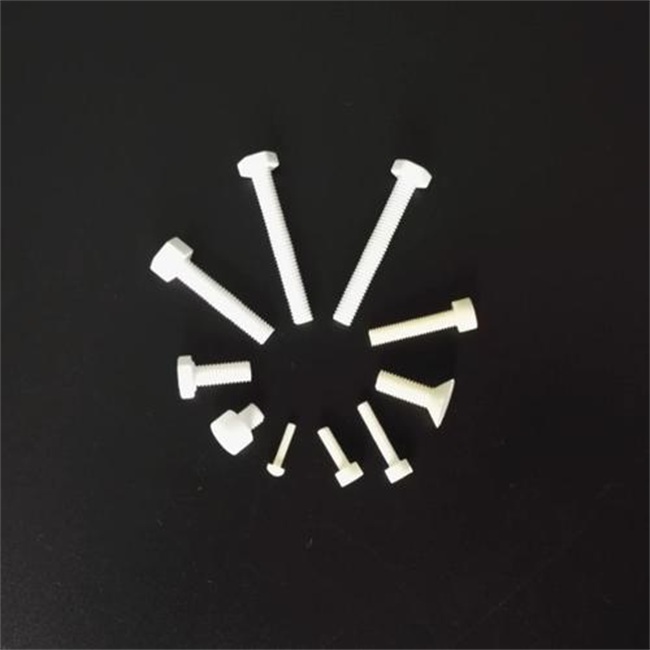
Material and Manufacturing Process: Root Causes Determine Performance
- Ceramic screws: innovation in inorganic non-metallic materials
Ceramic screws are made of advanced ceramic materials such as zirconia, alumina, and silicon nitride, and are manufactured through precision mold forming or isostatic pressing technology. The manufacturing process requires strict control of sintering temperature and atmosphere to ensure material density and grain structure. For example, zirconia ceramics need to be sintered at high temperatures above 1500 ℃ to form a tetragonal crystal structure, which endows them with high strength and crack propagation resistance. - Metal screws: the cornerstone of traditional industry
Metal screws are made from metals such as carbon steel, stainless steel, and aluminum alloy, and are formed through processes such as cold heading, wire rolling, and heat treatment. Its advantages lie in a mature industrial chain and low cost, but the conductivity, thermal conductivity, and susceptibility to corrosion of metal materials have become weaknesses in specific scenarios. - Plastic screws: representatives of lightweight and insulation
Plastic screws are made of engineering plastics such as nylon and polytetrafluoroethylene (PTFE), and are manufactured through injection molding process. Its lightweight and insulation properties make it widely used in the electronic field, but the creep and low melting point of plastics limit its use in high temperature or high stress environments.
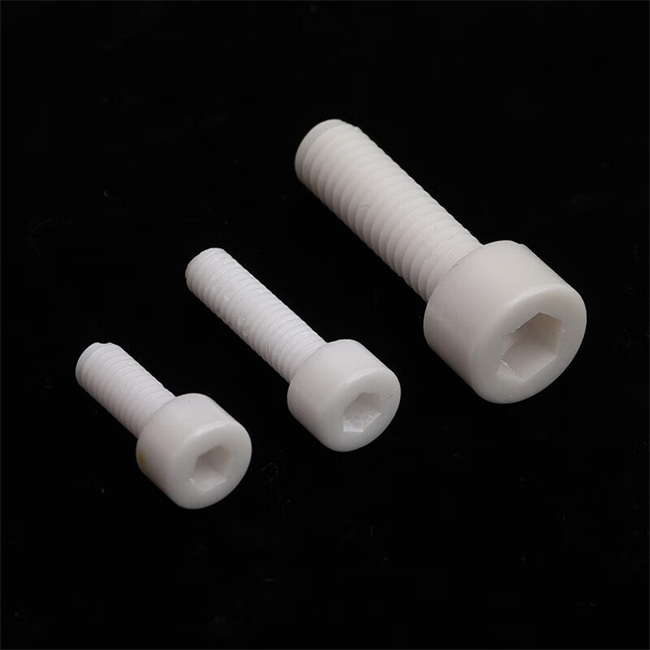
Core Performance Comparison: Differences Determine Applications
- High temperature and low temperature resistance performance
Ceramic screws: Zirconia ceramics maintain structural stability at high temperatures of 800 ℃, with a Mohs hardness of 9 and wear resistance far exceeding that of metals. For example, in the fixing of turbine blades in aircraft engines, ceramic screws can replace metal screws to avoid connection failure caused by high-temperature softening.
Metal screws: The strength of ordinary carbon steel significantly decreases above 400 ℃, while stainless steel, although resistant to high temperatures, is expensive.
Plastic screws: Nylon material softens above 120 ℃ and is only suitable for low temperature environments.
Solution scenarios: High temperature industrial equipment, aerospace engines, and petrochemical pipeline connections. - Insulation and anti magnetic performance
Ceramic screws: With a resistivity of up to 10 ¹⁵Ω· cm at room temperature, they can effectively isolate current and prevent explosions caused by electric sparks. In medical MRI equipment, the non-magnetic properties of ceramic screws avoid magnetic field interference and ensure imaging accuracy.
Metal screws: Conductivity poses a risk of short circuit, and magnetic materials (such as ferritic stainless steel) can interfere with precision instruments.
Plastic screws: Although insulated, they are prone to static electricity, and some plastics (such as PVC) contain plasticizers, which may contaminate electronic components.
Solution scenarios: electronic device casings, high-voltage transmission towers, medical imaging equipment. - Corrosion resistance and oxidation resistance
Ceramic screws: Zirconia does not react with strong acids or bases, and its lifespan can reach more than 10 times that of metal screws in salt spray environments. For example, in the fixing of sensors on offshore platforms, ceramic screws can resist seawater corrosion and reduce maintenance costs.
Metal screws: Although stainless steel is corrosion-resistant, pitting corrosion may still occur in chloride ion environments; Carbon steel needs to be galvanized or coated for protection, which increases the complexity of the process.
Plastic screws: PTFE material has excellent corrosion resistance, but poor UV resistance, and is prone to aging and cracking when used outdoors.
Solution scenarios: chemical reaction vessels, marine engineering, food processing equipment. - Mechanical properties and impact resistance
Ceramic screws: The tensile strength can reach 800MPa, but brittleness results in weaker impact resistance. By optimizing structural design (such as hollow structures), its toughness can be improved.
Metal screws: Carbon steel has a tensile strength of 400-1200MPa and excellent ductility and impact resistance, suitable for dynamic load scenarios.
Plastic screws: With a tensile strength of only 50-100MPa, they are prone to creep and are only suitable for light load static connections.
Solution scenarios: fixing car chassis (metal screws), lightweight connection of electronic devices (ceramic screws), low stress decorative parts (plastic screws).
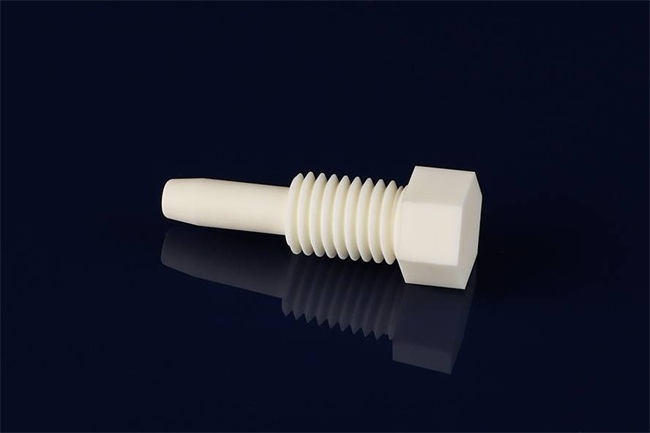
Application scenarios and typical cases
- Aerospace: Reliable choices in extreme environments
Case: A certain type of rocket engine nozzle is fixed with zirconia ceramic screws, which maintain connection strength under 3000 ℃ gas flushing and have a lifespan three times longer than metal screws.
Advantages: High temperature resistance, no stress concentration caused by differences in thermal expansion coefficients. - Medical devices: dual guarantee of safety and hygiene
Case: The orthopedic surgical robot uses silicon nitride ceramic screws to fix the robotic arm, avoiding possible allergic reactions caused by metal screws, and can withstand high temperature and high pressure sterilization at 134 ℃.
Advantages: Non magnetic, excellent biocompatibility. - Electronic communication: miniaturization and anti-interference requirements
Case: The 5G base station antenna module uses 0.5mm miniature ceramic screws to maintain connection stability at temperatures ranging from -40 ℃ to 85 ℃, with signal attenuation reduced by 20% compared to metal screws.
Advantages: Insulation and low coefficient of thermal expansion. - Petrochemical industry: corrosion resistance and long life requirements
Case: The sensors on offshore drilling platforms are fixed with alumina ceramic screws, which have a lifespan of 15 years in H ₂ S/CO ₂ corrosive environments, which is 5 times longer than stainless steel screws.
Advantages: Excellent chemical stability, no need for coating protection.
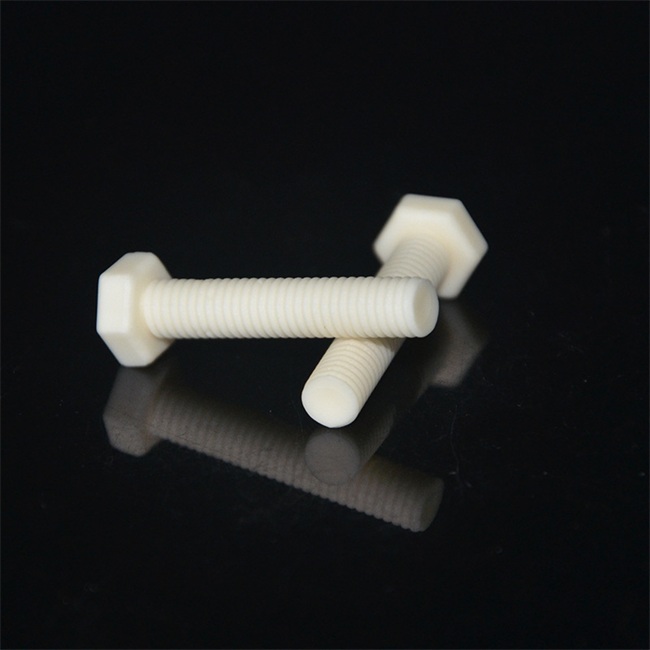
Selection guide: How to choose the most suitable screw?
High temperature environment (>500 ℃): ceramic screws are preferred, followed by high-temperature alloy metal screws.
Strong corrosive environment: ceramic screws (zirconia/alumina)>plastic screws (PTFE)>metal screws (Hastelloy).
Insulation requirements: Ceramic screws>Plastic screws>Metal screws (requiring coating).
Dynamic load scenario: Metal screws>Ceramic screws (requiring structural optimization)>Plastic screws.
Lightweight requirements: plastic screws>ceramic screws>metal screws.
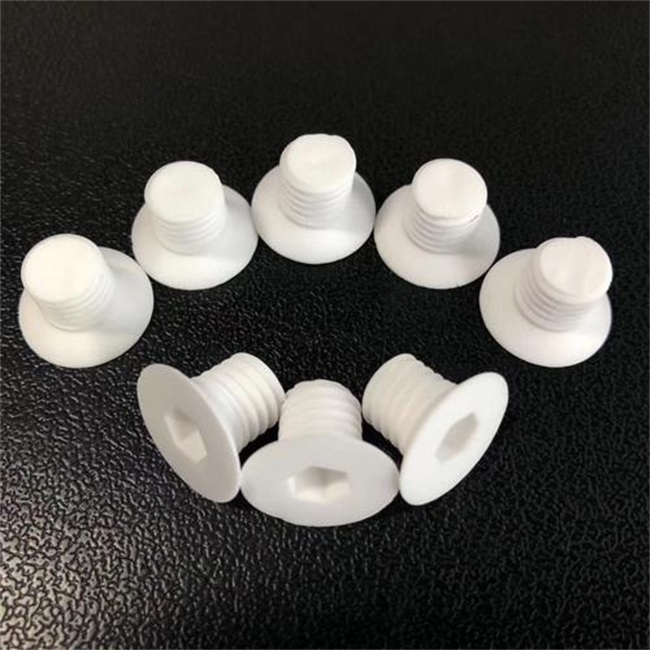
Ceramic screws, with their unique characteristics of high temperature resistance, insulation, and corrosion resistance, are penetrating from the high-end field to the civilian market. Understanding the performance boundaries of screws made of different materials is key to optimizing design, reducing costs, and improving reliability.
Brudeze Ceramics supplies and sells a wide range of high-quality quartz glass, including alumina ceramics, zirconia ceramics, silicon nitride ceramics, aluminum nitride ceramics, silicon carbide ceramics, boron carbide ceramics, bioceramics, machinable ceramics, etc. We can meet the customization requirements of various ceramic products.
PREVIOUS:What are the characteristics of 99 alumina ceramics
CATEGORIES
LATEST NEWS
- Zirconia Ceramic Rod Custom...
- High-temperature resistance...
- What is the wear resistance...
- What is the hardness of cer...
- Aluminum oxide ceramic cust...
- What are the main aspects o...
- What are the mechanical pro...
- Thermal properties of zirco...
- What properties should be c...
- What are the mechanical pro...
